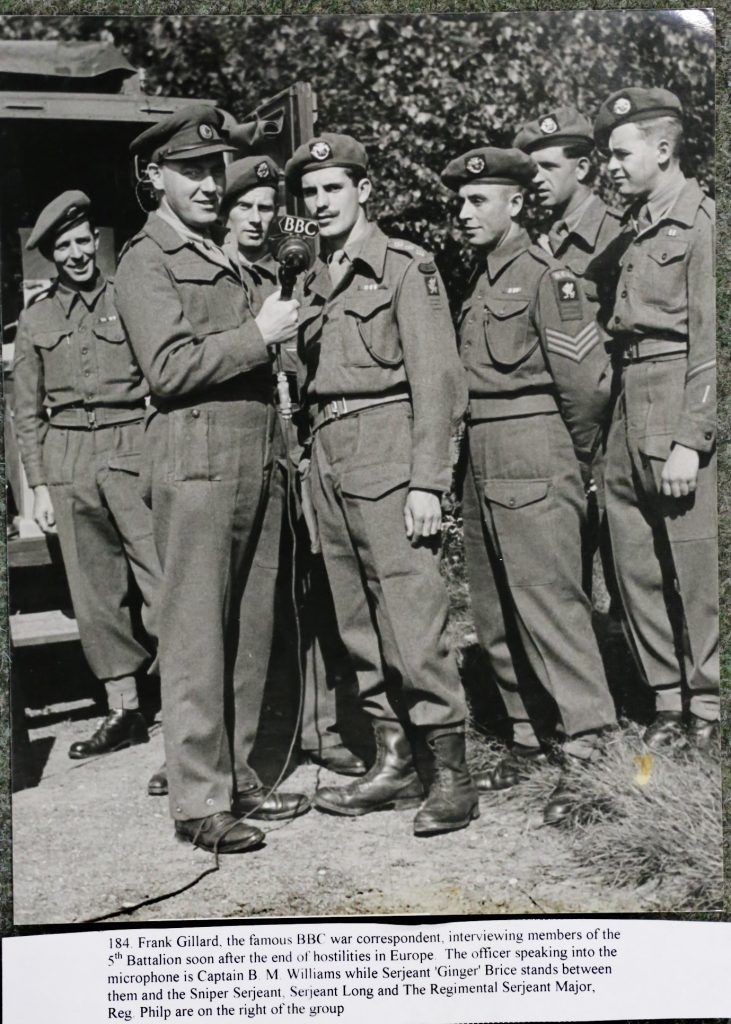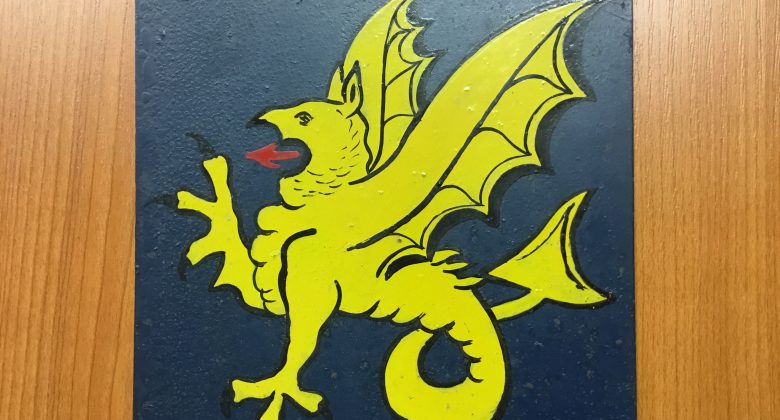Pictured: 43rd (Wessex) Divisional Insignia from the former 5 DCLI Old Comrades Association
…
ORIGINS OF THE WESSEX WYVERN: THE INSIGNIA OF THE 43RD (WESSEX) INFANTRY DIVISION
By Paul Rundle, LI Archivist & Research Team
…
The Wyvern was chosen in 1935 as the emblem of the reformed 43rd (Wessex) Division Territorial Army (TA). The 5th Battalion of the Duke of Cornwall’s Light Infantry (DCLI) formed part of this Division during the war in North West Europe from June 1944 until May 1945.
This mythological creature is of pagan origin when the dragon was the bringer of death and the serpent the symbol of guile. In its final form the ferocity of the dragon (body) is combined with the cunning of the serpent (barbed tail) and the speed of the eagle (legs and feet).
It became the emblem of the Wessex kings, Alfred the Great carried it on his battle standard and King Harold fell under it in 1066. It can be seen on the Bayeux Tapestry where it depicts the death of Harold. At this time Wessex was all the land lying approximately south of the Thames and the Bristol Avon. The Wyvern therefore linked the 43rd Division with the ancient traditions of the Anglo-Saxon kingdom of Wessex and their war like spirit. So, both by symbolism and tradition, no Division could claim a more significant or a prouder sign.
During the fighting in North West Europe the Division was made up of the old Wessex Infantry Regiments with their Supporting Arms and sixty officers seconded from the Canadian Army. On 6th June 1944 Operation Overlord commenced when allied forces under General Dwight Eisenhower landed on the Normandy coast at five beaches between Cherbourg and the Cotentin Peninsular to Le Havre. The assault plan called for the 43rd Division to be ashore approximately twelve days after the initial landings with the task of breaking out of the bridgehead. Because of a storm in the channel the 43rd Division was not actually fully landed at Arromanches and Courseulles until 24/25th June, it was commanded by Major-General Ivor Thomas.
In Normandy, the 43rd Division was referred to by their German opponents as “the yellow devils” (die gelben teufel) because of their fierce fighting spirit with the name derived from the golden Wyvern on their shoulder patch. This was indeed a compliment as most of their German opponents were from elite fighting units such as the 9th SS Panzer Division (Hohenstaufen), the 10th SS Panzer Division (Frundsburg) or the 12th SS Panzer Division (Hitlerjugend).

The 43rd Division then fought through Normandy, crossed the Seine at Vernon on the 26th August, battled through Holland and entered Germany on 11th November. They crossed the Rhine on 26th March 1945. On the 5th May the war in Europe ended with the unconditional surrender of the Germans, at this time the Wessex Wyverns were located near Bremen.
Throughout the fighting in North West Europe the Division was in constant action and suffered in excess of 12,500 casualties. At Hill 112 in Normandy the Division fought the fiercest and costliest action of the campaign. On this Hill stands the Divisional Memorial, replicas of it are situated at Rough Tor in Cornwall, Wynard’s Gap in Somerset and Mere in Wiltshire.
…
Paul Rundle, LI Archivist & Research Team


